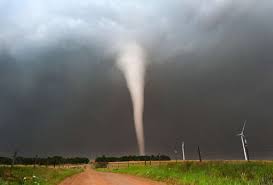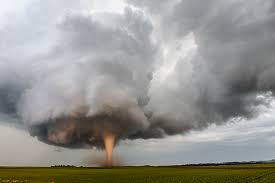Welcome to TOB Tuesdays Refreshed. Over the next few months we will revisit Katrina’s past blogs followed by Jack Henz’* reflection.
The Resurrection of Your Body by Katrina J. Zeno, MTS
If you were stranded on a deserted island and only had 2 items to read, what would they be? Would you choose a magazine article that impacted your life? A chapter from Scripture? Your favorite comic book? A love letter from your spouse or family member? What could sustain you as you read it over and over again?
You might have already guessed where I’m going with this: I would choose a section from the Theology of the Body and from Scripture, specifically TOB Audience 67 along with Chapter 15 from John’s Gospel. These two literary items radically reconfigured my life because they shifted my focus from life here and now to my ultimate destiny – and then back to life here and now.
So often in teaching the Christian faith, we operate from a 3-part framework: God’s original plan for man’s happiness, how we messed it up through sin, and how Christ’s death on the cross redeems and restores us to God’s original plan so we can be happy again. But we’ve left out a major element, and perhaps the most significant dimension to human life – what is our ultimate purpose? Are we created for happiness only in this life? Is death the end where we cease to exist? Did death extinguish Abraham Lincoln, Moses, Karl Marx, and Grandma Betty?
Hopefully, something within you rebels at this thought – that death is stronger than life, that the intimate bonds we experience with our loved ones disintegrate when we (or they) expire. If this were true, then eat, drink, and be merry! Acquire all the power, privilege, and material possessions you can! Avoid sacrifice, suffering, and demanding relational commitments because at any moment your dissolution may be at hand.
As Christians, the good news is that death is not the end of the story. Love is stronger than death. Intimate relational bonds continue after death because our personhood doesn’t disappear but stands out to an even greater and fuller measure. Here’s what St. John Paul II wrote in TOB A67: “This intimacy [with God in eternity] … will not absorb man’s personal subjectivity [personhood], but, quite on the contrary, will make it emerge in an incomparably greater and fuller measure.”
Imagine you, just you, projected onto an Imax screen. How big are you? Huge! Every part of you is magnified. You become even more distinct and authentically you. Your personhood is displayed prominently in all its glory, not minimized or diminished.
If this Imax example is an image of our heavenly perfection, does this mean your soul will be gigantic in heaven? The short answer is “no,” because as Pope Emeritus Benedict XVI said in his encyclical, “God is Love”: “Yet it is neither the spirit alone nor the body alone that loves: it is man, the person, a unified creature composed of body and soul, who loves. Only when both dimensions are truly united does man attain his full stature” (no. 5).
Only when both dimensions – body and soul are united forever in an eternal embrace of love – will you reach your full authenticity, your full stature and perfection. This is why every Sunday we profess, “I look for the resurrection of the dead and the life of the world to come. Amen!” Do you realize that when those words escape your lips, you are professing belief in the resurrection of your body?
The resurrection of the body is not an abstract concept, like saying “I believe the color blue exists.” This latter statement is impersonal. It exists as true apart from you (unless, of course, you are a Smurf). On the contrary, the resurrection of the body is a statement about your personhood, about the fulfillment of your human nature. You are a unified creature of both body and soul, which means your eternal happiness must include the resurrection of your body. Put briefly, your body has an eternal relationship with your soul that will not be discarded in eternity, but recovered and perfected.
Our everyday life, however, testifies to a different reality. Death, which evacuates the soul from the body, crashes into our human experience. We stare at the lifeless corpse of a loved one, trying to make sense out of how it is still his or her body, but now absent of the power to communicate his or her person. We feel a deep sense of loss, but quickly remind ourselves that the body is only a shell and that the soul is the true nature of the person and someday, God willing, we will rejoice again in the presence of our loved one’s soul in heaven.
May I invite you to reconsider this perspective that the soul is the true nature of the person and the body is only a temporary “rental” while here on earth? Scripture unequivocally states that death is the result of sin: “The wages of sin is death,” St. Paul reminds us in Romans 6:23.
Death is not God’s original plan for our “true self.” Sin and death introduced an unnatural separation into our human nature, into our personal selfhood. Death, we could say, divorces the two lovers of soul and body from each other and thrusts the soul into an artificial state of separation from the body. (See Blog #6 on “Christmas is a Wedding” to jog your memory about the “wedding” between body and soul.)
At Christ’s Second Coming, when all of creation is fully redeemed, our bodies will be raised, glorified, and re-united to our souls for all eternity.
This is why the work of salvation is not complete until Christ comes again (see Blog #7 on “The Four Comings of Christ”). At Christ’s Second Coming, when all of creation is fully redeemed, our bodies will be raised, glorified, and re-united to our souls for all eternity. St. Paul alludes to this eschatological moment in Romans 8:22-23 when he observes, “We know the whole creation has been groaning with labor pains together until now; and not only the creation, but we ourselves, who have the first fruits [primicia! – see Blog #9] of the Spirit, groan inwardly as we wait for adoption as sons…” And do you recall how St. Paul finishes this sentence? In other words, how does he describe what we groan inwardly for? It is not the redemption of our souls, but, he says, “the redemption of our bodies.”
Why? Why the redemption of our bodies? Why is the work of redemption not complete when the soul enters into eternity? I know thousands of people who would be deliriously delighted to shed their bodies at death and to think of themselves as a happy disembodied soul or consciousness for all eternity. Why does all creation groan and why should we groan as we await the redemption of our bodies?
Because matter matters. Embodiment matters. Masculinity and femininity matter all the way into eternity. If the deepest cry of the human heart is to be loved, and if eternity is where we are loved in the absolute fullness of our personhood, and if human nature is by its very nature a unity of body and soul, then our eternal happiness can’t be a state of the soul alone, divorced from the body. We must have a glorified body in order to experience the fullness of love, the fullness of total self-giving of our embodied person [our selfhood] toward which we have been maturing, laboring, straining our whole life long. It is the whole embodied person who is destined for salvation, not a soul separated from the body.
This brings us back to Gaudium et Spes, no. 22: “Christ…fully reveals man to man himself and makes his supreme calling clear” (see Blog #3). This is true not only of our life on earth where we seek to imitate Christ by living his new commandment to “love one another as I have loved you” through a total gift of self to God and neighbor, but it is also true of our eternal life. Jesus Christ fully reveals our supreme or ultimate calling: Christ’s body was raised from the dead as the “first fruits” (1 Cor 15:20) and principal witness to our fully redeemed state. Right now, in heaven, Christ’s human body is fully glorified, divinized! His human body is gloriously saturated, penetrated, permeated by divinity. And that divinized human body is intimately united to the Inner Life of the Trinity.
Can we let this truth penetrate the deepest recesses of our being? Smack in the midst of Divine Trinitarian Self-giving and receiving is the glorified human body of Christ, fully participating in the Trinitarian Communion of Persons. God and man don’t just sit down at table together; they intimately share One Divine Life in the Glorified Body of Christ for all eternity.
Our supreme calling, our eternal vocation, is to participate in this Divine Dance of Trinitarian Self-Giving and Receiving for all eternity in our glorified bodies.
Likewise, our supreme calling, our eternal vocation, is to participate in this Divine Dance of Trinitarian Self-Giving and Receiving for all eternity in our glorified bodies. Here’s the quote from TOB A67:3 that grabbed my selfhood, shook it up, turned it upside down and inside out, and implanted in me a new understanding of eternity that haunts me (in a good way) every minute of my life.
I like to call it the “p” quote, and I think you’ll see why (you might want to note all the words that begin with the letter “p”): “Participation in the divine nature, participation in the inner life of God himself, penetration and permeation of what is essentially human by what is essentially divine will then reach its peak, so that the life of the human spirit will reach a fullness that was absolutely inaccessible to it before.”
Got it? I imagine not because this is the Mystery of Mysteries, it is the divinization of our flesh not by becoming God by nature, but by participating in Divine Nature. I want to encourage you to read and meditate on this quote (and perhaps also Romans 8:22-23) this week as next week we will resume “penetrating” into this divinizing mode of “participating” in Divine Life. In the meantime, remember…you are an embodied gift!”
© Katrina J. Zeno, MTS
(Please “share” this blog – and invite your friends to like the JPII Resource Center FB page. Thank you.)
Jack Henz’ Reflection: Twisted Mysteries: Tornadoes and Your Body’s Resurrection!
 Images of Great Plains’ blowing dust and tornadoes filled the big screen. I’ve watched the movie Twister every year since it debuted in 1996. Many meteorologists and storm chasers watch this movie as a rite of passage from winter to spring. The movie follows a team of storm chasers/university researchers on a quest to gather data on the elusive F-5 (the worst) tornado. Despite the fact meteorological inaccuracies abound, weather fanatics are drawn to it like to bees to flowers.
Images of Great Plains’ blowing dust and tornadoes filled the big screen. I’ve watched the movie Twister every year since it debuted in 1996. Many meteorologists and storm chasers watch this movie as a rite of passage from winter to spring. The movie follows a team of storm chasers/university researchers on a quest to gather data on the elusive F-5 (the worst) tornado. Despite the fact meteorological inaccuracies abound, weather fanatics are drawn to it like to bees to flowers.
Why? Because it captures their personal passion for severe thunderstorms that mystify most folks. Despite decades of research, over 75% of tornado warnings are false alarms. The good news is 70% of tornadoes are warned to the public, but lead-times are low. Tornado forecasting is still quite a mystery and many tornadoes are surprises.
Only 10% of thunderstorms become supercells capable of producing tornadoes. Supercell formation relies on six key ingredients. First, abundant low-level moisture and heat are needed to develop an unstable air mass. The unstable air then needs a lifting mechanism that can release its energy into tall thunderstorms towering over 45,000 ft or more. In addition, the wind speed profile from the surface to the storm top needs to increase dramatically. Finally, these winds need to turn and twist as they rise to help the thunderstorm rotate.
All supercells are capable of producing tornadoes but less than 20% of them actually do. Supercells only last 1-4 hours adding to the challenge. The mystery lies in identifying which supercell will become tornadic, where and when.
Often, when most of the chase team is huddled around a computer trying to forecast where and if the supercells will form, the oldest and wisest meteorologist goes outside, slowly looks at the clouds, and marches back into the meeting and says something like, “we’re headed south.” Why? He knows severe weather is always somewhat of a mystery, and so puts faith in his decades of weather observations along with help from above to succeed.
So how does chasing severe thunderstorms and tornadoes link to Katrina’s blog about the resurrection of your body? Both tornado forecasting and the resurrection of our bodies are mysteries beyond our total understanding. Let’s see how.
On many spring days the unstable air over the Great Plains is just waiting to be lifted by a passing upper-level storm system and its attendant surface cold front into a “perfect” meteorological maelstrom resplendent with tornadoes, hail, and heavy rains. So, too, after death, our souls are awaiting the lifting resurrection of our dead bodies by the Holy Spirit into a perfect reunion of body and soul, which opens us to the resplendence of divinization (i.e., St. JPII’s “p” quote). All the key ingredients are finally present so that the energy of God can be released into our glorified, embodied personhood as we are fully penetrated and permeated by Divinity.
After death, our souls are awaiting the lifting resurrection of our dead bodies by the Holy Spirit into a perfect reunion of body and soul, which opens us to the resplendence of divinization.
I think being “lifted up” and then saturated with resplendent, divinized energy is what St. John Paul II was getting at when he said we will experience a fullness that was totally inaccessible to us while here on this earth. Certainly, we can try to imagine this fully divinized state, but ultimately it remains a mystery.
Indeed, just like the experienced forecaster spent decades learning to “read the clouds” in order to forecast supercells and tornadoes, so, too, we can learn to “read” the “forecast” of our ultimate destiny, whose arrival will be announced by Jesus “coming on the clouds.” (Although I doubt anyone will accurately forecast Jesus’ return, no matter how much experience they have!)
So, while my meteorological peers try to capture weather as an exact science by using cold, mathematical equations, my decades of experience tells me one can learn more on how to predict a storm by watching its formation than by manipulating the math. Likewise, God’s creativity and high-powered energy defy human attempts to capture it in a bottle – just watch a cumulus cloud grow into a resplendent thunderstorm. What a wonderful mystery, just like our body’s resurrection and Christ’s Second Coming.
©by Jack Henz
We invite you to share your own 2-3 line reflection on our JPII Resource Center Facebook page by clicking here.
*Jack Henz is a retired meteorologist and a graduate of the Diocese of Phoenix ‘s Kino Catechetical Institute. Together with his wife Karen, he is a passionate catechist concerning all things Catholic, especially the Theology of the Body.




